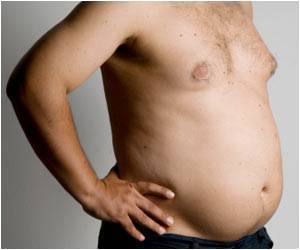Highlights
- Lipodystrophy is a rare condition that causes abnormal fat changes in the body.
- Leptin treatment regulates the fat and glucose metabolism in lipodystrophy.
- Scientists find that patients liver respond positively to leptin treatment in lipodystrophy patients.
Research Study
The research study funded by the National Institutes of Health was conducted on 23 patients with partial lipodystrophy-associated nonalcoholic steatohepatitis (fatty liver). The response of these patients to the metreleptin drug was predicted.
The research team reported that patients who had a lower leptin level had a higher response rate, after one year of treatment with metreleptin.
Elif Oral, M.D., associate professor of endocrinology at Michigan Medicine and principal investigator of the study, said, "Fatty liver, or excess fat building up in the liver, is a common metabolic disturbance seen in patients with lipodystrophy."
"The underlying metabolic disturbances seen in this patient population can be difficult to manage with traditional therapies."
Scientists evaluated the NASH score and NAS score. The NASH score is a numerical score which investigates the progression of fatty liver disease in patients, while the NAS score evaluates the numerical score for progression of non-alcoholic fatty liver disease.
Around 22 patients were treated with meterleptin drug. The study findings of 18 patients who completed treatment after one year revealed an improvement in NASH and NAS score.
The research team also noted that these changes were statistically remarkable in the patient group.
Oral said, "About half of the patients had scores that lowered by two points or more, which is clinically significant in patients with this disease."
"Generally, that type of drop is only seen with 10 percent or more sustained weight loss in the common form of fatty liver disease, which usually only occurs with metabolic surgery."
Patients with greater reduction improvement in their scores from treatment had lower leptin level of 14.5ng/mL when compared to those who had an average leptin level of 25ng/mL.
There was also a reduction in glucose control and lipid levels. Side effects reported in more than 20% of the patients include upper respiratory tract infections, hypoglycemia and diarrhea.
Nevin Ajluni, M.D., assistant professor of endocrinology at Michigan Medicine, said, "The liver disease at baseline is quite significant among the patients in this study, which showed a significant degree of inflammation and fibrosis, even in the absence of liver test abnormalities."
"This highlights the importance of screening for this complication."
Metreleptin Drug
Metreleptin drug is a man-made version of the naturally occurring hormone leptin, which may regulate the fat and glucose metabolism.
The drug was approved by the Food and Drug Administration in 2014 to treat generalized lipodystrophy. However, it has not been approved to treat partial lipodystrophy.
Lipodystrophy
Lipodystrophy refers to the abnormal fat changes in the body. They can dramatically change your appearance.
Two types of lipodystrophy namely,
- Generalized lipodystrophy may result in fat loss throughout the entire body.
- Partial lipodystrophy may cause fat loss mostly in the arms, legs, head and torso and fat accumulation the neck, face and intra-abdominal areas of the body.
- Lipodystrophy and Body Changes - ( http://www.thewellproject.org/hiv-information/lipodystrophy-and-body-changes )
Source-Medindia














